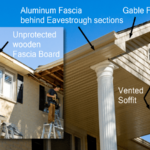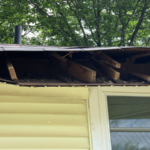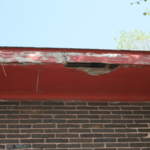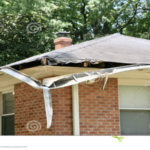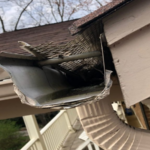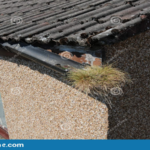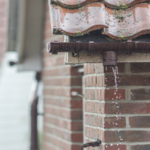If your gutters are leaking, sagging, or overflowing, they may be bad. You should also check for rust, holes, or other damage. If your gutters are more than 20 years old, they may need to be replaced.
What is the most common problem with gutters?
The most common problem with gutters is that they can become clogged with leaves and debris, which can cause water to back up and overflow. This can damage your home’s foundation, siding, and landscaping. To prevent this, it’s important to regularly clean your gutters and remove any debris that has accumulated.
How often should house gutters be replaced?
It is typically recommended that house gutters be replaced every 20 years. However, many factors can contribute to how often gutters need to be replaced, such as the type of gutters, the climate, and the amount of trees nearby.
How do I test my gutters?
- The best way to test your gutters is to pour a small amount of water into them and see if it drains properly. If it doesn’t, then you may need to clean your gutters or have them repaired.
- Another way to test your gutters is to look for any leaks or cracks. If you see any, then you’ll need to have them repaired as soon as possible.
- Finally, you can also test your gutters by making sure that they’re properly attached to your home. If they’re not, then they may not be able to properly protect your home from water damage.
How long do average gutters last?
Gutters are an important part of any home’s exterior and play a vital role in protecting your home from water damage. But how long do gutters last? The average lifespan of a gutter system is 20-30 years, but this can vary depending on the type of gutters, the materials used, the climate, and how well they’ve been maintained.
There are a few things that can impact the lifespan of your gutters. The type of gutter system you have will make a difference. Seamless gutters, which are made of a continuous piece of material, tend to last longer than sectional gutters, which are made of individual pieces that are joined together. The material your gutters are made of will also influence how long they last. Aluminum gutters are a popular choice because they’re durable and low-maintenance, but they can be susceptible to damage from hail or falling tree limbs. Copper and galvanized steel gutters are also durable options, but they’re more expensive. Vinyl gutters are a budget-friendly option, but they’re not as durable as other materials and can become brittle and crack in cold weather.
How many years do gutters last?
Gutters are an important part of any home, and they should be properly maintained in order to last. While most gutters are made to last for many years, the lifespan can be shortened by a number of factors, including poor installation, lack of maintenance, and damage from weather or debris.
If you want your gutters to last for as long as possible, it is important to have them installed by a professional and to regularly clean them out. You should also be sure to inspect them for any damage after severe weather events. If you notice any damage, it is important to have it repaired as soon as possible to prevent further damage.
In most cases, gutters will last for many years with proper installation and maintenance. However, if they are not properly cared for, they may only last a few years. If you are unsure of how to properly maintain your gutters, it is best to consult with a professional.
Should you replace gutters or roof first?
If you have leaking gutters, it’s best to replace them first. If your gutters are old and worn but not leaking, you may be able to get away with just repairing them. However, if your roof is old and worn, it’s best to replace it.
Is replacing gutters hard?
So when your gutters start to fail, it’s important to replace them as soon as possible. The good news is that replacing gutters is a relatively easy DIY project that most homeowners can tackle in a day or two.
Here’s what you need to know about replacing gutters, including a step-by-step guide to help you get the job done.
There are two main types of gutters – sectional and seamless. Sectional gutters are made of pre-formed sections that you piece together like a puzzle. Seamless gutters are made of a continuous sheet of metal that’s custom-fit to your home.
Is it better to have gutter guards or not?
There is no easy answer when it comes to deciding whether or not to install gutter guards. The main advantage of gutter guards is that they can help to prevent leaves and other debris from clogging up your gutters, which can lead to serious problems like water damage to your home. However, gutter guards can also be expensive to install and maintain, and they may not be 100% effective at keeping debris out of your gutters. Ultimately, the decision of whether or not to install gutter guards is up to you and will depend on your budget and your level of comfort with taking on the additional maintenance responsibility.
Is it normal to have some standing water in gutters?
If you have gutters, it is not abnormal to have some water standing in them. This is because the gutters are designed to catch and channel water away from your home. However, if the water is not draining properly or if the gutters are full of debris, the water may not be able to drain properly and will pool in the gutters. If this is the case, you should clean out your gutters and make sure they are free of debris so that the water can drain properly.
Conclusion
If your gutters are bad, you may notice water damage on your home’s exterior or foundation. You may also see leaks in your gutters or notice that your gutters are sagging. If you suspect that your gutters are bad, it’s important to have them inspected by a professional to determine the extent of the damage and to get repairs or replacement as needed.

